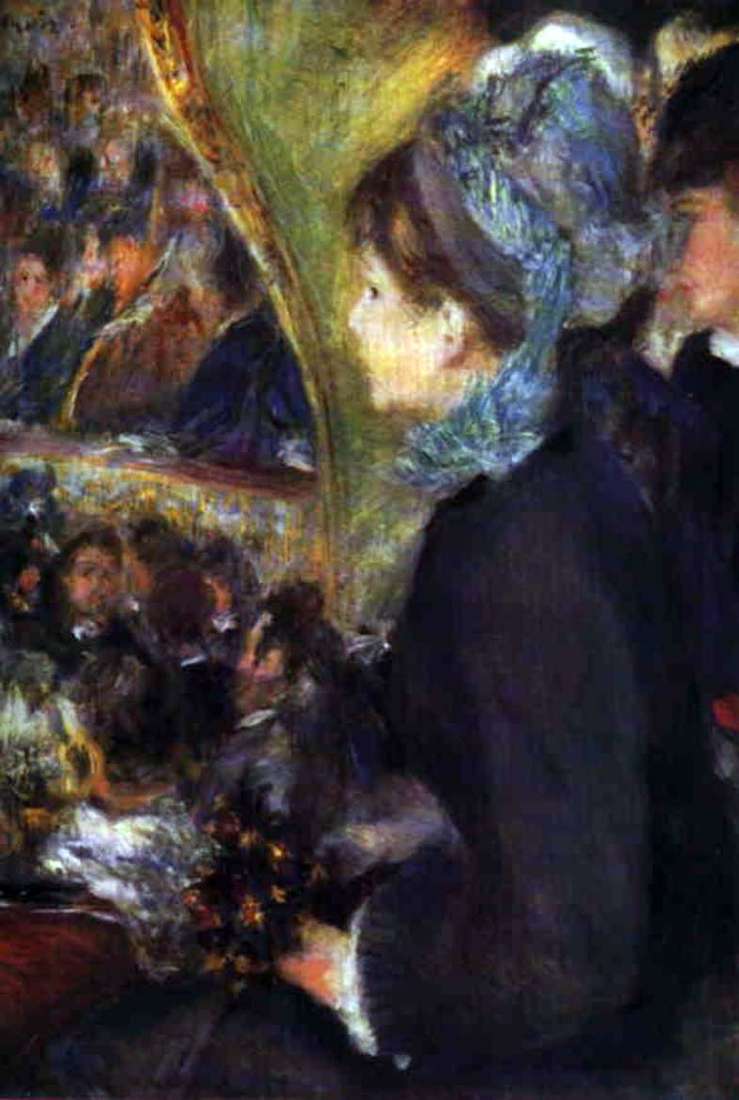
“Renoir’s love for the theater was special. This is how Jean Renoir describes this feeling in his memoirs:” In his youth, he did not miss a single Offenbach operetta. He also watched Herve. He was especially aware of the festive excitement that encompassed the viewer as soon as he crossed the threshold of the auditorium.
For him, the “festive” side of the case was of particular importance. We go to the theater to follow the plot of the play, or we are interested in characters; my father was absolutely not caring about it. He went to the theater, like going to the village on Sundays to enjoy the fresh air, flowers, and especially the joy of other people walking. Renoir had the ability to focus on one impression, despite dozens of other different impressions. “And a little higher, on this same page of the book, Jean Renoir recalls his father’s exclamation:” For example, I want to look at a pretty woman in a bed. “
Renoir enjoyed the theater, but he almost never wrote what was happening on the stage, although the theater primarily exists on the stage, and not in the auditorium. Renoir was more excited and captured by those who breathed theater, its atmosphere.
In the film “The First Exit”, Renoir not only managed to convey the impression of the first visit to the theater by a charming girl. The charming texture of the colors seemed to convey to the viewer the magic of a theatrical performance.
The artist was reproached for writing this picture in a different manner than “The Lodge”, as if they regretted that almost two years later Renoir began to write differently. However, this is not strange. In the mid-seventies, Renoir reached the highest point of the impressionistic style of writing, and his artistic development proceeded rapidly, and this was characteristic of the impressionable and impulsive nature of the master.
What is the difference between the composition, texture of the painting “First Exit” from the previously written “Lodge”? All the elements of the static representative portrait, which are still felt in the figure of Nini, are completely absent in the new work. Here everything is represented as if from a fly snatched from the thick of life with a spectacular frame, as if you accidentally turned around and saw the adorable profile and figure of a young girl with a small bouquet of yellow flowers in her hand in the next box, and behind her is almost indistinguishable in details the woman accompanying her, since the girl’s cap closes the space behind her, and it remains only to imagine the appearance of this beautiful lady in the gentle outline of the cheekbones, bright lips, dark brown hair.
The girl’s gaze is fixed on the stage, and in front of her, unnoticed by her and at the same time creating that special noisy and brilliant theatrical atmosphere, people crowded in the stalls. The face of one of them is drawn to a girl, and next to it, in the boxes, there are other people, faces, clothes. Fractional, separate strokes, running zigzag lines of paints, rapidly applied to the canvas by Renoir, somewhat calm down where the girl’s face is depicted, the golden background on which she is painted, and the almost monochromatic dress, which takes almost a good third of the canvas. The image of the dress brings us to the style of Renoir, in which he will later write “Umbrellas”, “Girls in Black” and other works. However, this will all be in the future, and here, in the painting “First Exit,” everything sparkles and crushes, even the color of the girl’s cap and ribbons,
Renoir managed to fix the viewer’s gaze on the profile of the girl and on one eye visible to the viewer amid this variety of colors. This point, framed by subtle black eyelashes, stands out on the canvas, and the girl’s gaze, aspiring, apparently on the scene, her tense posture psychologically accurately convey the excitement of the first exit to the noisy and magnificent world of the theater. And when they claim that Renoir in his portraits was far from the psychological depth, this portrait, like some others, for example, the portrait of Victor Choquet, suggests that Renoir could be a convincing psychologist and a subtle portraitist. “
 In the Garden by Pierre Auguste Renoir
In the Garden by Pierre Auguste Renoir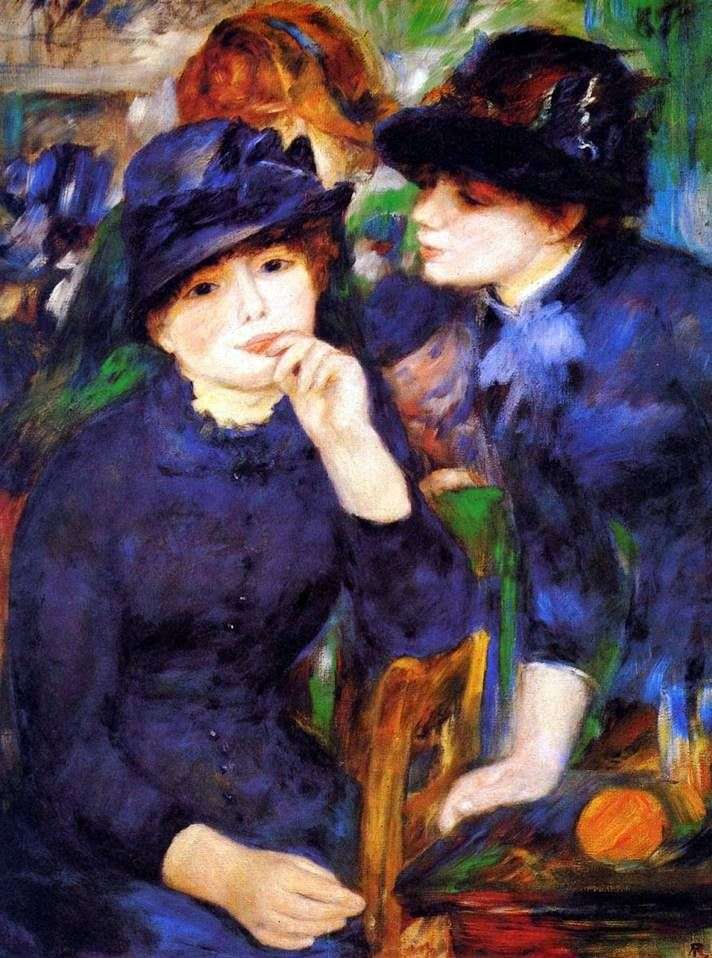 Girls in Black by Pierre Auguste Renoir
Girls in Black by Pierre Auguste Renoir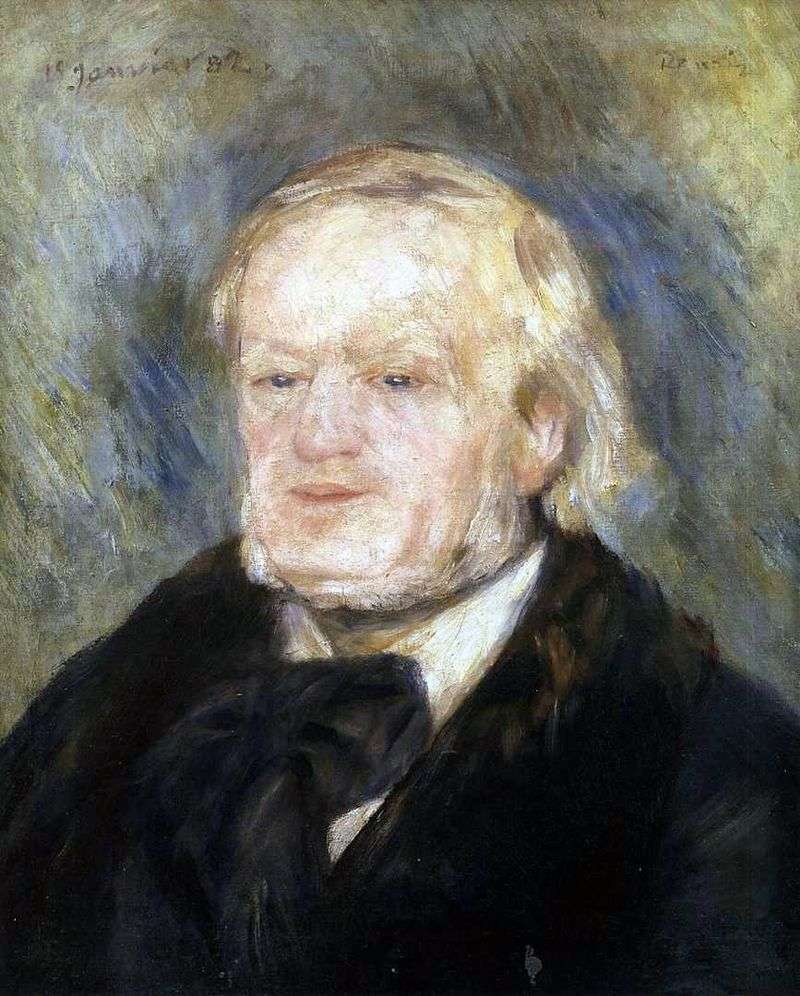 Portrait of Wagner by Pierre Auguste Renoir
Portrait of Wagner by Pierre Auguste Renoir Girl With A Watering Can by Pierre Auguste Renoir
Girl With A Watering Can by Pierre Auguste Renoir La Loge by Pierre Auguste Renoir
La Loge by Pierre Auguste Renoir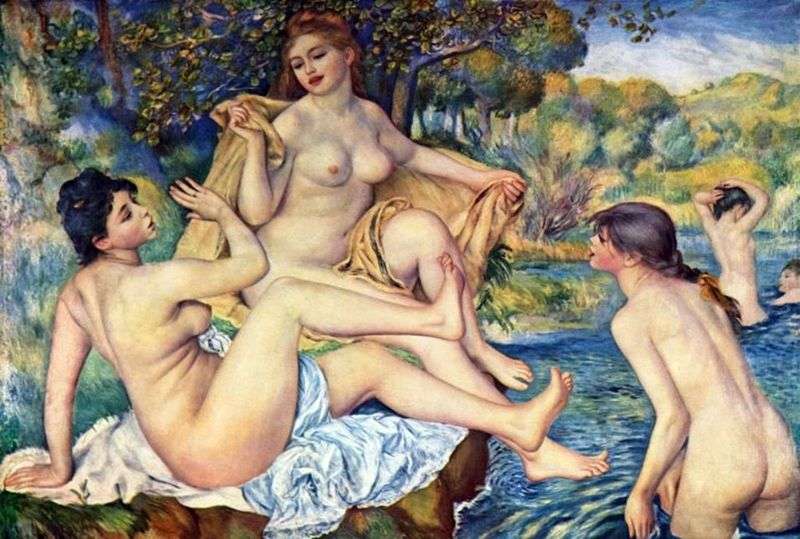 Great Bathers by Pierre Auguste Renoir
Great Bathers by Pierre Auguste Renoir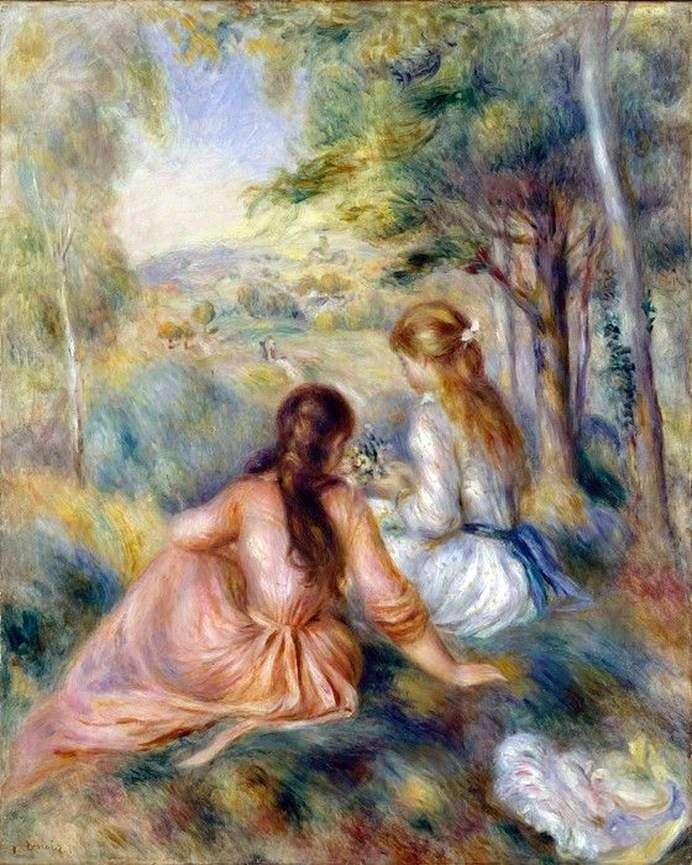 On the meadow by Pierre Auguste Renoir
On the meadow by Pierre Auguste Renoir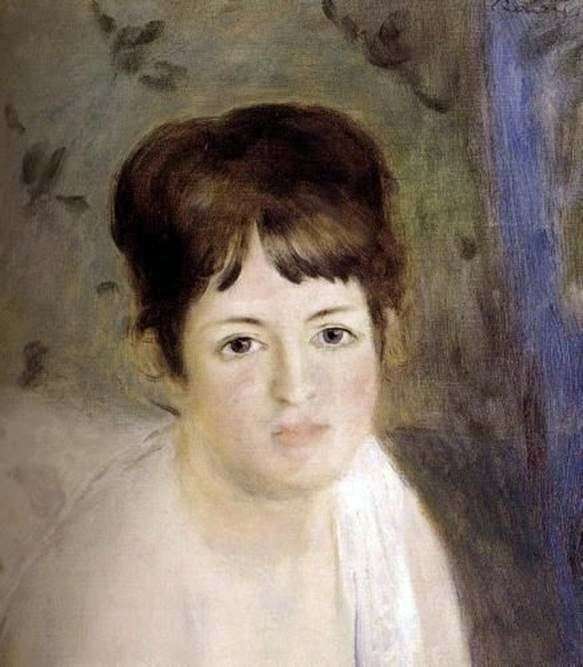 Woman’s Head by Pierre Auguste Renoir
Woman’s Head by Pierre Auguste Renoir